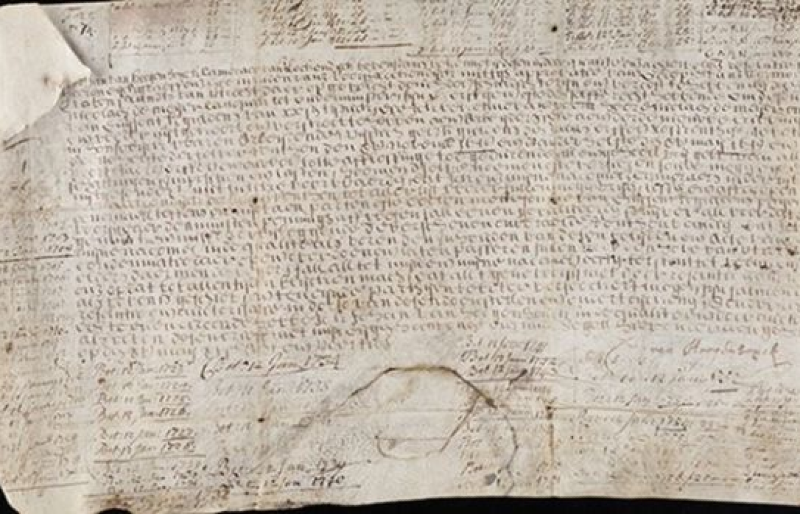He just climbed and then skied down Everest without oxygen

A Polish adventure skier has made history by becoming the first person to climb up and ski down Mount Everest without the use of additional oxygen. The ascent was Andrzej Bargiel’s third attempt at climbing Everest – the tallest mountain on earth at 29,032ft high – after dangerous conditions forced the 37-year-old to abandon earlier attempts in 2019 and 2022. More than 6,000 people have climbed the mountain, but only about 200 have done it without additional bottled oxygen. A few people have skied back down, but never a continuous downhill without supplementary oxygen. It took nearly 16 hours on Monday for Bargiel to climb through the “death zone”, which is above 8,000 meters where oxygen levels are dangerously low. At the top of the mountain the air is so thin that climbers only get about a third of the oxygen available at sea level. This can cause brain damage, fluid in the lungs, and even death. (via The Guardian)
The oldest and one of the weirdest musical instruments ever invented

Stalactites hang tight to the ceiling, and stalagmites push up with might from the floor: this is a mnemonic device you may once have learned. It would surely be called to mind by a visit to Luray Caverns in the American state of Virginia, home of the Great Stalacpipe Organ. Not long after the discovery of Luray Caverns itself in 1878, its stalactites were found to resonate through the underground space in an almost musical fashion when struck — a property Leland W. Sprinkle took to its logical conclusion in the mid-nineteen fifties. Conception was one thing, but execution quite another: it took him three years to locate just the right stalactites, shave them down to ring out at just the right frequency, and rig them up with electronically activated, keyboard-controlled mallets. This was not hard for the technically minded Sprinkle, who worked at the Pentagon as a mathematician and electronics scientist. (via Open Culture)
Yale University owns a bond from 1648 and continues to collect interest on it

The Beinecke Rare Book and Manuscript Library of Yale University, like other world-class rare book libraries, has treasures that could sell for vast amounts of money if auctioned. But it also has an item that does not have to be sold to collect cash value. In 1624, the Dutch city of Utrecht needed to raise cash to build a dike, so it sold bonds. These are perpetual bonds – that is, ones that never mature or expire. The owners can collect interest indefinitely. It's also a bearer bond, so whoever possesses it can claim the interest. In 2003, NPR reported that Yale acquired such a bond dating to 1648 from the Utrecht water authority. Geert Rouwenorst, a finance professor at the university, took the bond to the Netherlands and collected 26 years of back interest. When the library curator went to the Netherlands in 2015 to collect the next payment, it amounted to the equivalent of $153 USD. (via Neatorama)
Hi everyone! Mathew Ingram here. I am able to continue writing this newsletter in part because of your financial help and support, which you can do either through my Patreon or by upgrading your subscription to a monthly contribution. I enjoy gathering all of these links and sharing them with you, but it does take time, and your support makes it possible for me to do that. I also write a weekly newsletter of technology analysis called The Torment Nexus.
Two Irish boys went out to play and somehow wound up in New York City

On a mild afternoon in 1985, two boys from the Darndale housing estate in Dublin slipped out to play. Their mothers thought they’d be back within the hour. Dinner was nearly ready, and nothing in the world suggested they would do more than kick a football around the flats. But by the time the evening news rolled around, ten-year-old Keith Byrne and thirteen-year-old Noel Murray were no longer in Dublin. They weren’t even in Ireland. In fact, within a matter of days, the pair would cross three borders, trick airline security, and set foot on the streets of New York City, without passports, without tickets, and with nothing more than a pocketful of coins nicked from a charity fountain. It was, by any measure, one of the most extraordinary childhood adventures ever told. And the reason behind it all? According to Keith Byrne, he wanted to meet his hero B.A. Baracus from the show The A-Team. (via Utterly Interesting)
This 17th century female artist was once a bigger star than Rembrandt

Around the turn of the 17th century, the Dutch artist Johanna Koerten sold a “sublime work consisting of flowers, arms, eagles [and] crowns, decorated in foliage, of woven silk in a rustic manner,” to the wife of Holy Roman Emperor Leopold I. According to the biographer who wrote this description, the empress paid at least 4,000 guilders for the textile — more than double the amount received by Koerten’s better-known contemporary, Rembrandt van Rijn, for his monumental 1642 masterpiece, The Night Watch. Today, The Night Watch is one of the most famous paintings of all time, its creator lionized as one of the greatest artists to ever live. Meanwhile, the Koerten “thread painting” that once commanded a higher price than Rembrandt’s group portrait is lost, and its creator is virtually unknown to the general public. (via The Smithsonian)
A great prank well executed: Sitting in the park

Acknowledgements: I find a lot of these links myself, but I also get some from other newsletters that I rely on as "serendipity engines," such as The Morning News from Rosecrans Baldwin and Andrew Womack, Jodi Ettenberg's Curious About Everything, Dan Lewis's Now I Know, Robert Cottrell and Caroline Crampton's The Browser, Clive Thompson's Linkfest, Noah Brier and Colin Nagy's Why Is This Interesting, Maria Popova's The Marginalian, Sheehan Quirke AKA The Cultural Tutor, the Smithsonian magazine, and JSTOR Daily. If you come across something interesting that you think should be included here, please feel free to email me at mathew @ mathewingram dot com



